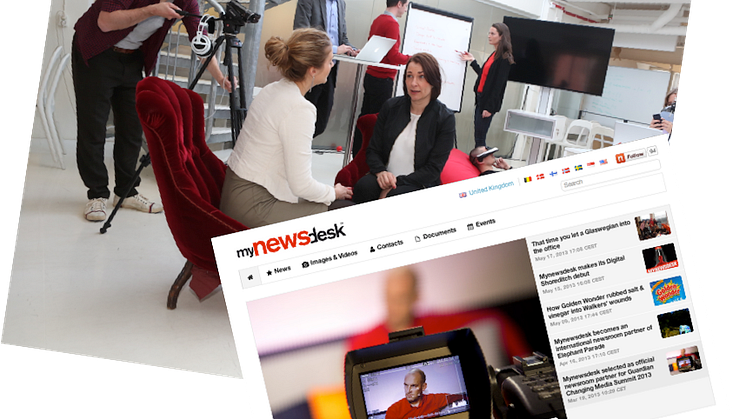
Blog post -
Building your organisation's internal newsroom
We are now in an age where everyone is a potential editor, publisher or broadcaster. That goes for your company, your customers, staff, competitors, associates and stakeholders.
This represents a seismic shift in the balance of power away from an organisation simply relying on third party media outlets (newspapers, magazines, radio, TV) to publicise your content, either through PR, lobbying or advertising.
As a result, a large majority of companies now have regularly updated online channels. From blogs to Facebook Pages and from Twitter feeds to LinkedIn Company profiles, organisations are now stepping up to the plate and becoming de facto publishers and broadcasters.
However, with the power to publish comes responsibility.
The responsibility is to ensure a steady, on-going, 24/7 supply of engaging, interesting and informative content - just as the editors of Vogue, the Financial Times, News at Ten or Property Week have to.
This isn’t about selling and talking about how great you or your products are. It is more about informing, amusing, educating, enticing, entertaining and creating the conditions whereby your customers build their trust in you as a brand. Ultimately this will lead to brand loyalty, customer retention and new sales.
As I explained in my last blog for Mynewsdesk (click here), the only way to ensure this flow of content is to ensure that your business is properly geared up to be ‘social’. There must be:
- An all-encompassing social strategy
- Someone to manage your channels on a regular
basis
- A social advertising budget
- The right internal conditions in which social
media can flourish
This last point is critical. The only way you can ensure a regular flow of dynamic content is to get the right foundations in place. This entails a top-down understanding of the benefits of using social media to achieve strategic business objectives, effective internal dialogue and a proactive approach to providing ideas for content.
This may sound simple but in many companies, this will involve a major change in the way the organisation operates. Breaking down a silo mentality, improving inter-departmental and inter-colleague communications and inspiring employees to contribute to the marketing effort is often far easier said than done.
Get this right though and the next stage to becoming a successful publisher will become far easier – namely building an internal newsroom to provide the engine for your content. To get an idea about how this could work, we need to look no further than the traditional newspaper model for a direct analogy.
The structure of a newsroom
At the top of the tree is the editor, whose job it is to ensure that their publication is of a sufficiently high standard and is in line with the aspirations and interests of their target audiences. The parallel internally is the marketing manager or the content editor. They need to ensure the website plus all their channels meet their strategic business objectives.
Beneath the editor are the sub editor, features editor and news editor. The sub editor essentially looks after the visual aspects of the publication – well written articles, decently sized images and well formatted pages.
The features editor liaises with both internal and external writers to supply well written content which can be slotted into the paper as and when necessary. In our social newsroom, both positions could be filled by the marketing manager, community manager or external PR agency.
Then there is the news editor – a vital position in any newspaper. Their job is to liaise with a range of internal reporters plus external news gatherers, media outlets, PR agencies, news agencies and press offices to add content for use in their publication.
In an organisation's parallel social media universe, the ‘virtual’ news editor has a similarly important role. In order to ‘feed’ the content-hungry blogs and social networks, they need to cast their net wide and reach out to a myriad of sources.
Internally, this could include employees, stakeholders or volunteers, depending on the organisation. Harnessing your workforce and incentivising them to provide a steady flow of ideas can often be the single most effective way of feeding your content ‘pipeline’.
This is particularly true in large organisations or charities with hundreds of volunteers. In effect, you can create a huge, de facto, marketing team.
Externally, the list is potentially endless with customers, other blogs, guest bloggers, news outlets, PR coverage, testimonials and other social sites - all contributing to the content you can use online. As well as getting over the headache of coming up with fresh ideas all the time, a further benefit of using external or third party sources is that their endorsements or advocacy will be deemed to have greater value than if you were just promoting yourself.
So, in summary:
- Think like a publisher
- Have a proper strategy for social
- Organise your editorial team
- Look internally and externally for content
- Harness as many people as possible to provide
you with fresh ideas
By David Taylor, Head of Social Business at Zoodikers and author of The Business of Being Social.
Check out our latest white paper The rise of the brand newsroom which gives in depth advice along with a step by step guide on building your own brand newsroom.



